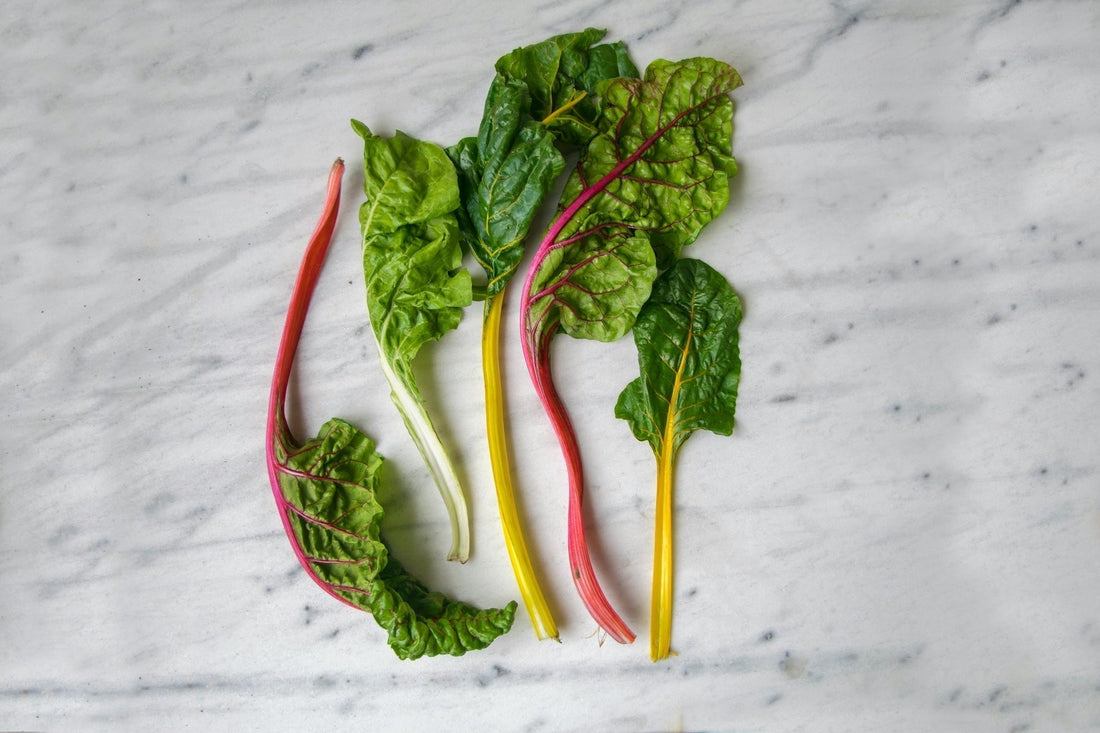
Weekly Wellness Tip: Power Up Your Plate with Dark Fruits and Vegetables
Share
Welcome to another edition of our weekly wellness tips! This week, we're diving deep into one of nature's most powerful nutritional strategies: incorporating dark-colored fruits and vegetables into every meal. At Organic Pharmer, we believe that the path to optimal health begins with understanding the science behind what we eat, and today we're exploring why the darkest produce on your plate might just be the most beneficial.
The Science Behind Dark Pigmentation
The rich, deep colors of dark fruits and vegetables aren't just visually appealing – they're nature's way of signaling exceptional nutritional density. These vibrant hues come from powerful plant compounds called phytochemicals, which serve as the plant's natural defense system against environmental stressors like UV radiation, pests, and diseases. When we consume these colorful foods, we inherit these protective benefits.
The darker the color, the higher the concentration of these beneficial compounds. This is why a deep purple eggplant contains more antioxidants than its lighter counterparts, and why blueberries outrank their pale cousins in nutritional value. The pigments responsible for these colors – anthocyanins, betalains, chlorophyll, and carotenoids – are potent antioxidants that help combat oxidative stress in our bodies.
Macro and Micronutrient Powerhouses
Dark fruits and vegetables are nutritional goldmines, packed with both essential macronutrients and vital micronutrients that our bodies crave. Let's break down what makes these foods so exceptional:
Antioxidant Compounds
The deep pigments in dark produce contain some of the most powerful antioxidants known to science. Anthocyanins, found in blueberries, blackberries, and purple cabbage, have been shown to support cardiovascular health and cognitive function. These compounds help neutralize free radicals that can damage cells and contribute to aging and disease.
Vitamin and Mineral Density
Dark leafy greens like kale, spinach, and Swiss chard are exceptional sources of vitamin K, folate, and iron. Dark orange and red vegetables such as sweet potatoes and red bell peppers are rich in beta-carotene, which converts to vitamin A in the body, supporting eye health and immune function. Purple and blue fruits provide vitamin C and manganese, essential for collagen production and bone health.
Fiber Content
Many dark fruits and vegetables are excellent sources of dietary fiber, which supports digestive health, helps regulate blood sugar levels, and promotes satiety. The fiber in dark produce often comes with additional benefits, as it's typically accompanied by prebiotics that feed beneficial gut bacteria.
Health Benefits Backed by Research
Scientific research consistently demonstrates the remarkable health benefits of consuming dark-colored produce. Studies have shown that people who regularly consume dark fruits and vegetables have lower rates of cardiovascular disease, certain cancers, and neurodegenerative conditions.
The anti-inflammatory properties of these foods are particularly noteworthy. Chronic inflammation is linked to numerous health issues, from arthritis to heart disease. The phytochemicals in dark produce help modulate inflammatory pathways, potentially reducing the risk of inflammatory conditions.
Additionally, the high antioxidant content supports cellular health and may slow the aging process. Research suggests that the compounds in dark berries can improve memory and cognitive function, while dark leafy greens support eye health and may reduce the risk of age-related macular degeneration.

Simple Strategies for Every Meal
Incorporating dark fruits and vegetables into every meal doesn't have to be complicated. Here are some practical approaches:
Breakfast: Add frozen blueberries or blackberries to your smoothie, or sauté dark leafy greens into your morning eggs. A handful of spinach in your morning smoothie provides nutrients without altering the taste significantly.
Lunch: Build your salads with a base of dark greens like arugula or baby kale instead of iceberg lettuce. Add purple cabbage, dark berries, or roasted purple sweet potatoes for extra color and nutrition.
Dinner: Incorporate dark vegetables as side dishes or main components. Roasted Brussels sprouts, grilled eggplant, or steamed broccoli can transform any meal into a nutritional powerhouse.
Snacks: Keep dark berries, purple grapes, or cut vegetables like purple carrots readily available for healthy snacking throughout the day.
Seasonal Considerations
One of the beautiful aspects of eating dark produce is the seasonal variety available. Spring brings dark leafy greens and early berries, summer offers an abundance of dark stone fruits and vegetables, fall provides purple root vegetables and late-season berries, and winter gives us stored dark produce and imported options to maintain variety year-round.
Choosing seasonal, locally-grown dark produce not only ensures peak nutritional value but also supports sustainable farming practices and reduces environmental impact.

Recipe: Rainbow Power Bowl
Here's a simple, delicious recipe that showcases the power of dark fruits and vegetables:
Ingredients:
- 2 cups mixed dark leafy greens (kale, spinach, arugula)
- 1 cup cooked quinoa
- 1/2 cup roasted purple sweet potato, cubed
- 1/2 cup fresh blueberries
- 1/4 cup shredded purple cabbage
- 1/4 cup pomegranate seeds
- 2 tablespoons pumpkin seeds
- 1/4 avocado, sliced
Dressing:
- 2 tablespoons olive oil
- 1 tablespoon balsamic vinegar
- 1 teaspoon honey
- 1/2 teaspoon Dijon mustard
- Salt and pepper to taste
Instructions:
- Preheat oven to 400°F. Cube the purple sweet potato and roast for 25-30 minutes until tender.
- While the sweet potato roasts, prepare the quinoa according to package directions.
- Whisk together all dressing ingredients in a small bowl.
- Massage the dark leafy greens with a small amount of the dressing to soften them.
- Arrange the massaged greens in a bowl, then top with quinoa, roasted sweet potato, blueberries, purple cabbage, pomegranate seeds, and avocado.
- Sprinkle with pumpkin seeds and drizzle with remaining dressing.
- Enjoy immediately for the best texture and flavor.
This colorful bowl provides a spectrum of nutrients, with each dark ingredient contributing its unique set of vitamins, minerals, and phytochemicals. The combination creates a synergistic effect, where the nutrients work together to provide maximum health benefits.

Making It Sustainable
The key to successfully incorporating more dark fruits and vegetables into your diet is making it sustainable and enjoyable. Start small by adding one dark fruit or vegetable to each meal, then gradually increase as these foods become a natural part of your eating pattern.
Remember, the goal isn't perfection but progress. Every dark berry, every leaf of kale, every bite of purple cabbage contributes to your overall health and wellbeing. By making this simple change – adding dark fruits and vegetables to each meal – you're taking a powerful step toward optimal nutrition and long-term health.
At Organic Pharmer, we're committed to helping you make informed choices about your nutrition. Stay tuned for next week's wellness tip, and remember: the darker the color, the greater the power!
